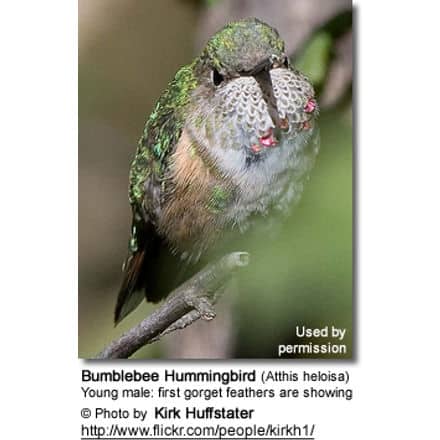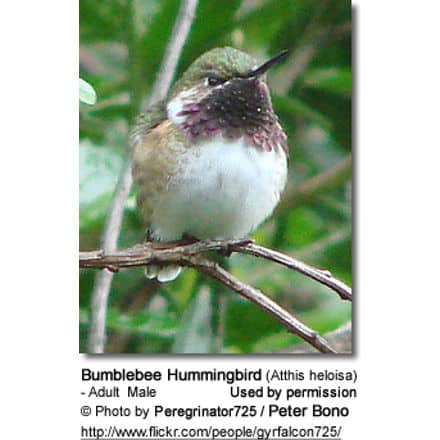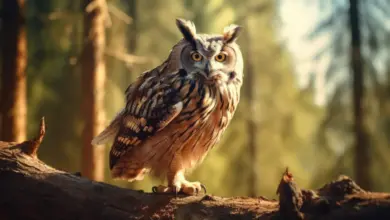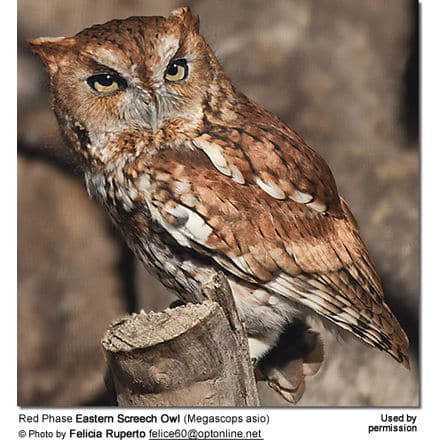Bumblebee Hummingbirds (Atthis heloisa)
The Bumblebee Hummingbirds (Atthis heloisa) – also known as Heloise’s or Morcom’s Hummingbirds – occur naturally in Mexico and southern United States.


The “Smallest Bird” In the World Controversy
Metabolism and Survival and Flight Adaptions – Amazing Facts
Distribution / Range
Bumblebee Hummingbirds are found year-round in the montane forests of Mexico north to the Isthmus of Tehuantepec and a small number of them migrate to southern Arizona in the summer to breed (it has been spotted a couple of times in the Huachuca Mountains). Its natural range is nearly 115 830 square miles or 300,000 square kilometers, but it is uncommon in portions of its native range. They typically inhabit subtropical or tropical moist montanes.
Bumblebee hummingbirds are preyed upon by birds of prey, frogs, fish and tropical spiders
Atthis heloisa heloisa (Lesson and DeLattre, 1839) – Nominate Race
- Found in the highlands of northeastern, central and southern Mexico (central Tamaulipas to Guerrero and Oaxaca)
- Atthis heloisa margarethae (R. T. Moore, 1937)
- Found in the highlands of northwestern and western Mexico (southeastern Sinaloa and southwestern Chihuahua to Jalisco).
- [Atthis heloisa morcomi] – Proposed race based on two old specimens from southeastern Arizona, which could possibly be vagrants or mislabeled specimens
Description
The Bumblebee Hummingbird is the second-smallest bird known to be in existence – second only to the Bee Hummingbird.
It averages 2.75 inches or 7 cm in length and weighing, on average, 0.1 oz or 3 grams. They are comparable in size to bumble bees and are lighter than a Canadian or U.S. penny.
The upper plumage and sides are mostly green. The plumage below is whitish. The rounded tail is green with a rufous base.
Gender ID:
The male can be identified by the violet-red gorget (throat patch).
Similar Species
The Bumblebee Hummingbird resembles the Lucifer Hummingbird, which also has a elongated purplish gorget, but can be differentiated by the Bumblebees hummingbird’s short and straight bill, and rounded tail with the rufous base.
Diet / Feeding
Bee Hummingbirds primarily feed on nectar taken from a variety of brightly colored, scented small flowers of trees, herbs, shrubs and epiphytes – visiting up to 1,500 flowers on an average day. They favor flowers with the highest sucrose concentrations.
They seek out, and aggressively protect, those areas containing flowers with high energy nectar. They use their long, extendible, straw-like tongues to retrieve the nectar while hovering with their tails cocked upward as they are licking at the nectar up to 13 times per second.
Sometimes they may be seen hanging on the flower while feeding. They spend most of the day feeding as they have to eat half their total body mass and drink 8 times their total body mass in water each day to support their extremely high metabolism.
Many native and cultivated plants on whose flowers these birds feed heavily rely on them for pollination. The mostly tubular-shaped flowers actually exclude most bees and butterflies from feeding on them and, subsequently, from pollinating the plants.
Bumblebee Hummingbirds may visit local hummingbird feeders for some sugar water, or drink out of bird baths or water fountains where they will either hover and sip water as it runs over the edge; or they will perch on the edge and drink – like all the other birds; however, they only remain still for a short moment.
They also take some small spiders and insects – important sources of protein particularly needed during the breeding season to ensure the proper development of their young.
Insects are often caught in flight (hawking); snatched off leaves or branches, or are taken from spider webs. A nesting female can capture up to 2,000 insects a day.
Males establish feeding territories, where they aggressively chase away other males as well as large insects – such as bumblebees and hawk moths – that want to feed in their territory. They use aerial flights and intimidating displays to defend their territories.
Males establish feeding territories, where they aggressively chase other male hummingbirds, large insects, such as bumblebees and hawk moths that want to feed in their territory. They use aerial flights and intimidating displays to defend their territories.
Breeding / Nesting
The breeding season usually commences at the end of the wet season and the onset of the dry season, when many trees and shrubs are flowering.
Hummingbirds are solitary in all aspects of life other than breeding; and the male’s only involvement in the reproductive process is the actual mating with the female. They neither live nor migrate in flocks; and there is no pair bond for this species.
Males form leks (groups of singing males that participate in competitive courtship rituals). The males will perform various songs to attract females, which may be brief warbles or a repetition of a few notes.
Females may visit several leks throughout the day and select a mate based on his performance. A single male may mate with several females in one season. In all likelihood, the female will also mate with several males. Mating can occur on a perch or while hovering in the air
He will separate from the female immediately after copulation. The males do not participate in choosing the nest location, building the nest or raising the chicks.
The female alone is responsible for building the small cup-shaped nest out of plant fibers (about 1 inch or 3 cm in diameter), woven together and green moss on the outside for camouflage in a protected location in a shrub, bush or tree.
She lines the nest with soft plant fibers, animal hair and feather down, and strengthens the structure with spider webbing and other sticky material, giving it an elastic quality to allow it to stretch to double its size as the chicks grow and need more room.
The nest is typically found on a low, thin horizontal branch between 3 to 20 feet from the ground.
The average clutch consists of two pea-sized white eggs, which she incubates alone for 14 to 16 days, while the male defends his territory and the flowers he feeds on. The young are born blind, immobile and without any down.
The female alone protects and feeds the chicks with regurgitated food (mostly partially-digested insects since nectar is an insufficient source of protein for the growing chicks). The female pushes the food down the chicks’ throats with her long bill directly into their stomachs.
As is the case with other hummingbird species, the chicks are brooded only the first week or two, and left alone even on cooler nights after about 12 days – probably due to the small nest size. The chicks leave the nest when they are about 18 to 38 days old.
The young will start breeding when they are about 1 year old.
Calls / Vocalizations / Sounds
Their calls are described as shrill and high-pitched “chip”, “ssssssssiu”.
Alternate (Global) Names
Spanish: Colibrí de Eloísa, Colibrí de Heloise, Zumbador Mexicano … French: Colibri à bec court, Colibri héloïse … Italian: Colibrì bombo, Colibrì di Elisa … German: Heliosaelfe, Heloisa Elfe, Heloisaelfe, Rosenkehlelfe … Latin: Atthis heloisa, Atthis morcomi, Selasphorus heloisa, Trochilus heloisa … Czech: Kolibrík cmelákový, kolib?ík ?melákový … Danish: Mexicansk Bikolibri … Finnish: Meksikonpikkukolibri … Japanese: koakahigehachidori … Dutch: Hommelkolibrie … Norwegian: Humlekolibri … Slovak: cmelovec elf … Swedish: Humlekolibri
Relevant Websites
- World Land Trust – Rainforest Conservation in Action: https://www.worldlandtrust.org
Beauty Of Birds strives to maintain accurate and up-to-date information; however, mistakes do happen. If you would like to correct or update any of the information, please contact us. THANK YOU!!!

 Atthis heloisa heloisa (Lesson and DeLattre, 1839) – Nominate Race
Atthis heloisa heloisa (Lesson and DeLattre, 1839) – Nominate Race



